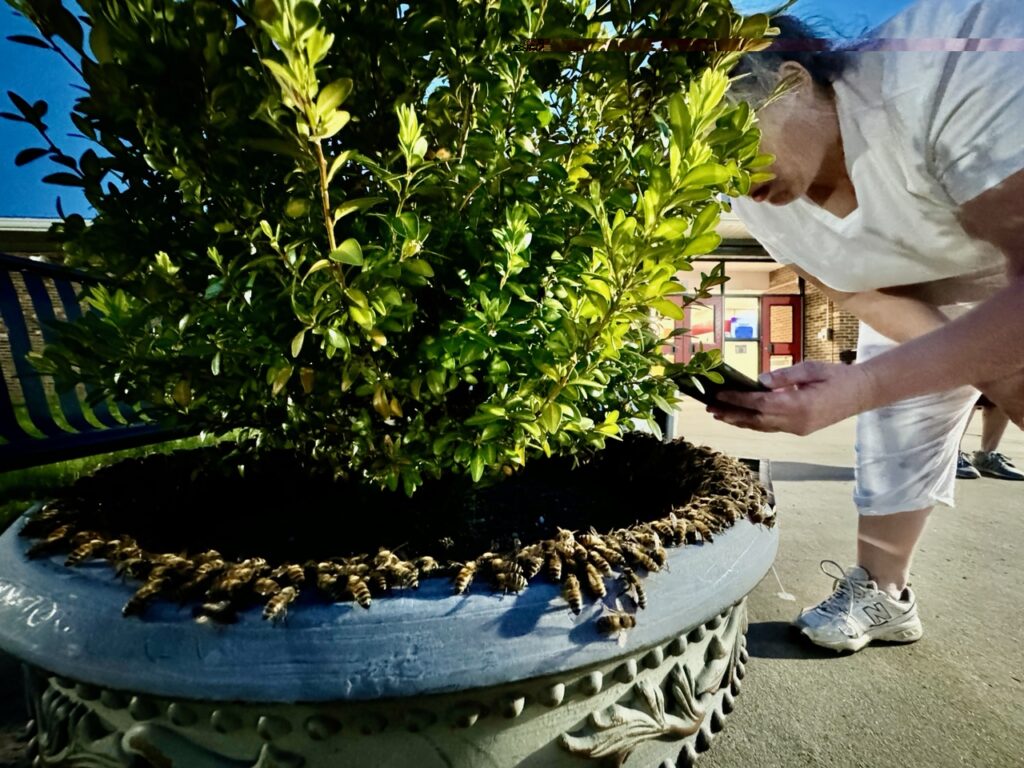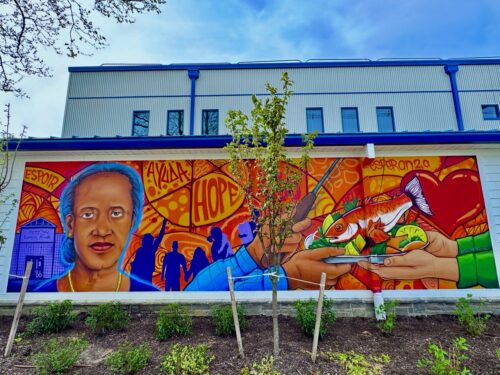
By LINDSAY SAKRAIDA
Early one morning a while back, Dublin House co-owner Sean Dunne walked into the “eerie” empty bar to check on construction work underway on the second floor. But when he went to open a locked door to let in more light, he realized he’d left his keys downstairs.
After retrieving them, Dunne returned to find the door mysteriously now open. The puckish work of an old tenant, he says no matter that this former tenant has been dead for decades.
“Mrs. Patterson’s ghost is still in the house, and it has been proven by a clairvoyant,” Dunne declares. “They have confirmed her presence.
“Now when I come into the house in the morn, I say ‘Good morning Mrs. Patterson.’ The construction ruffled her feathers a little bit.”
Out back, the new open-air Temple Bar.
Dunne’s partner in the Monmouth Street establishment, Eugene Devlin, chuckles at this and the name of a construction worker. Dunne explains that at one point during the remodeling work, a couple of walls collapsed, and the worker “was convinced Mrs. Patterson wasn’t too happy about the changes.” But her supernatural temper changed, Devlin and Dunne believe, once she saw how they were improving her old bedroom, now their office.
She also must have concluded that the two native Irish owners were merely trying to return the Victorian building to its original integrity, rather than blaspheme it. And while they have been renovating almost since they purchased the house in 2004, only now can the public see what Mrs. Patterson has been slowly growing accustomed to.
“The house was sinking,” Dunne says. “So we’ve done a lot of work out of the public eye.”
The first noticeable phase of the work has just been unveiled. Last week, a crowd turned out for the opening of the Temple Bar, the backyard area named for one of the most charming cobblestoned streets in Dublin, one that happens to be lined with public houses.
Dubbed “the crème de la crème” by Dunne, Temple Bar, unlike the more familiar courtyard out front, offers not only outdoor tables but an actual bar as well. Patrons can imbide while enjoying a view of the concealed shops next door, across an alley reminiscent of the winding ones of its namesake district.
An upstairs restaurant is expected to be finished in October, followed by the downstairs bar. Though Devlin and Dunne don’t intend to close the Dublin House for renovations, there will likely be sections shut off throughout the next few years until the building is complete, they say.
As their devotion to the historical integrity of the house suggests, Devlin and Dunne are all about authenticity, both architectural and cultural. From the Celtic design and photos of famous Irishmen to the sense of community they invite, everything about the Dublin House evokes the owners’ heritage. Dozens of people come every Sunday morning to watch live Irish games on TV; if they’re lucky, they might get to join the Dublin House’s exclusive social group.
“We have a regular bunch of older guys that come and hang out at the bar everyday,” Devlin says. “We call them the Breakfast Club.”
But you don’t have to be in the club to enjoy a traditional Irish breakfast. The meal of black and white pudding, beans, potatoes, eggs, bacon, and sausages will soon be offered anytime of the day. Good
thing, considering an Irish breakfast is heavy enough to be dinner.
If nonstop breakfast doesn’t get your mouth watering, though, there’s also Gaelic chicken, Dublin-style fish and chips, shepherd’s pie, bangers and mash, and a guarded family recipe for Irish coffee.
Devlin, who also owns the Waterstone Grill in Manhattan’s financial district, brought his chef, a fellow Irishman named Connor Powell, down to Red Bank to turn the modest Dublin House into a gastropub.
Still, the owners are modest with their hopes.
“The food is good hearty Irish, and we don’t want to stretch it because there are so many restaurants around here,” Devlin says. “We want it to be simple, and we don’t want to gouge people.”
Less modestly, he and Devlin lay claim to “best pint of Guinness in Jersey” because of the attention they they say their bar staff gives to the two-part process. They use imperial pint glasses, which hold 20 ounces instead of 16, and pour to perfection through a special tap that requires a trained server to operate with patience.
“You get 20 ounces of Guinness for five dollars,” Dunne says proudly.
According to Devlin and Dunne, that kind of effort is well worth the trouble if it brings them one step closer to their everlasting goal of authenticity.
“The Guinness here is as good if not better than a pint you can get in Dublin,” Dunne says. “And I should know I had about six of them last night.
“Quality control, you see.”






















